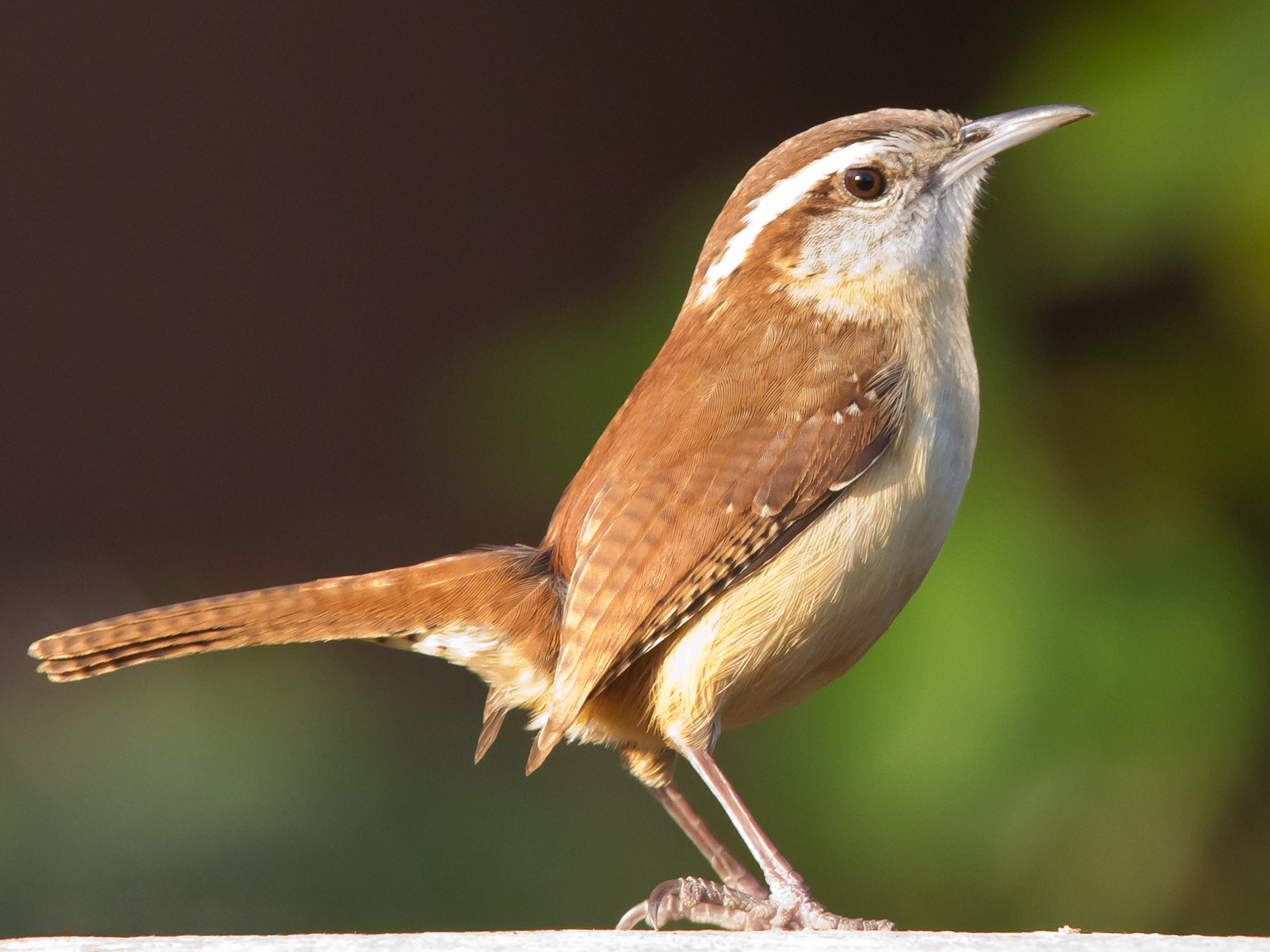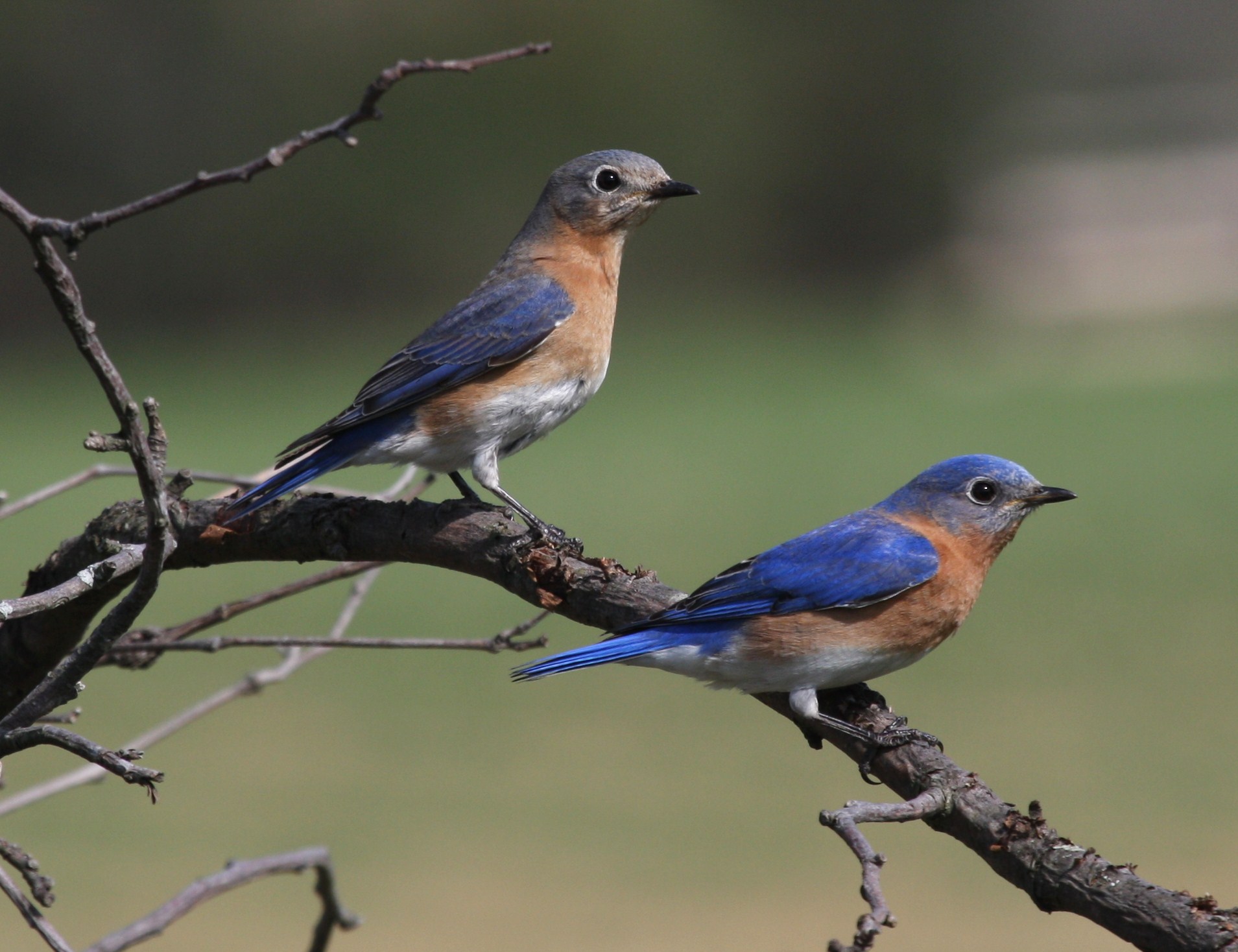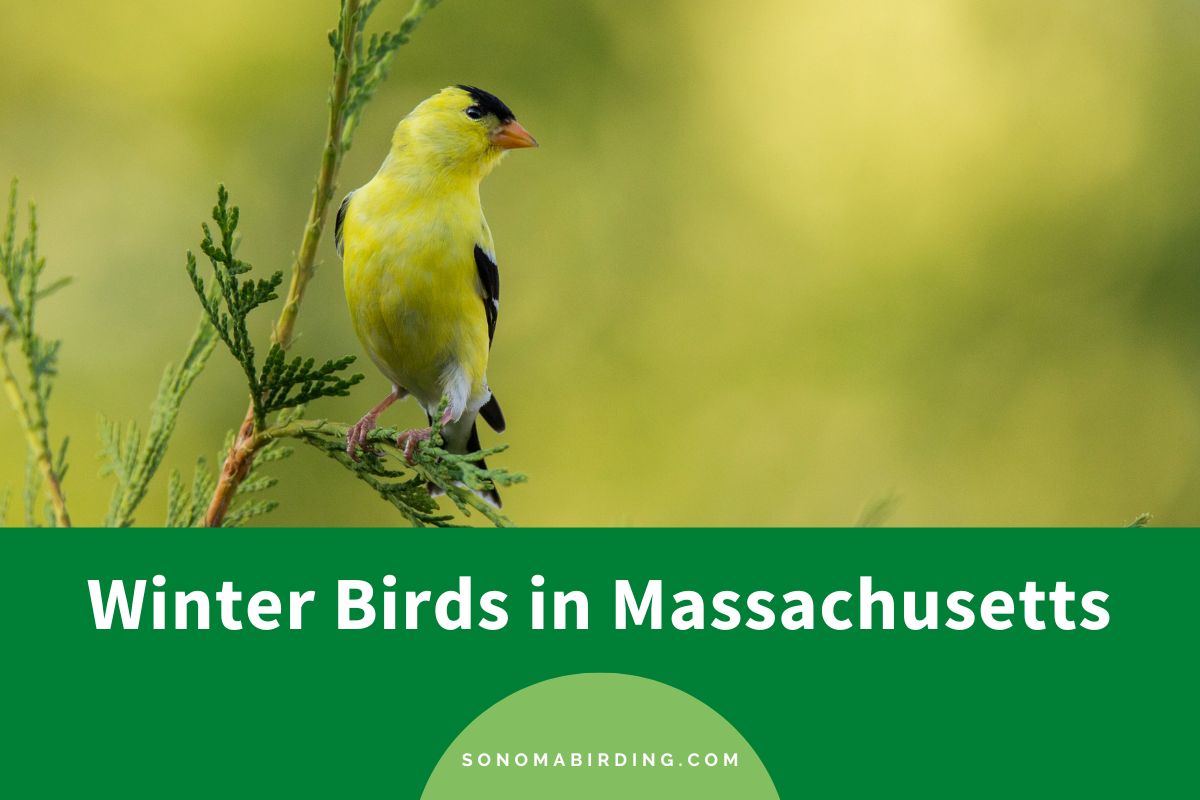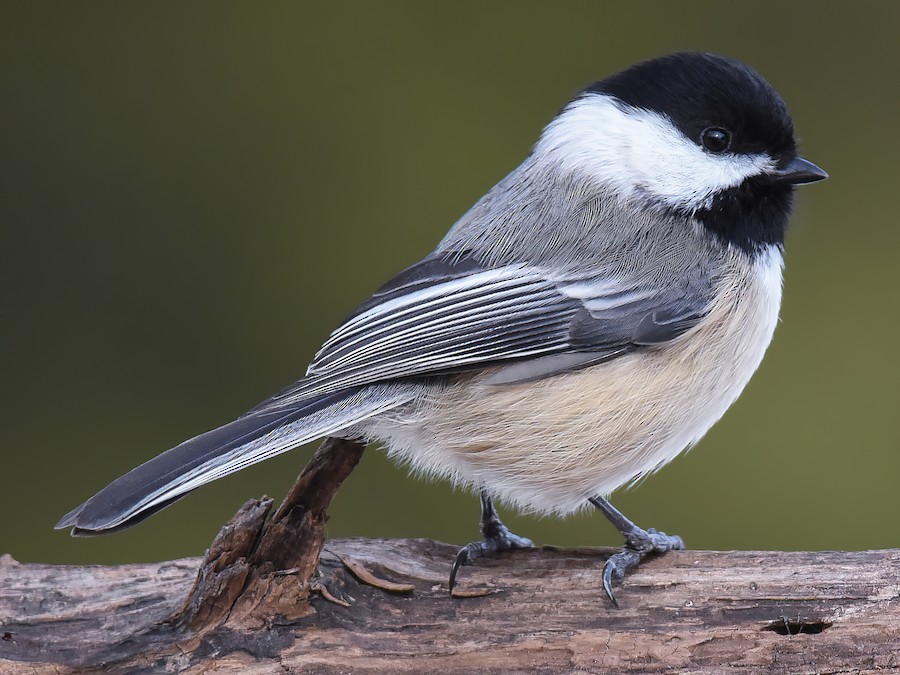Though you probably wouldn’t exactly associate Massachusetts during the winter with the idea of warmth, the state is a sanctuary for several birds that migrate there from the north every year. Some birds are also year-round residents of the state. In this article, we’ll be going over several birds that spend their winters in Massachusetts.
1. American Goldfinch
Scientific Name: Spinus tristis
Range: United States, Southern Canada, Northern Mexico
The American goldfinch is a small finch that consists of a sharp bill that is pink during the summer and grayish-brown during the winter, a small head, long wings, and a short, notched tail. Adult males during the spring and summer are yellow in color with black foreheads and wings. Females are pale yellow below and olive green above with two wing bars.
The preferred habitats of the American goldfinch include weedy fields and floodplains. They can also be found in more urban environments such as roadsides, orchards, and urban backyards.
The diet of the American goldfinch mainly includes seeds, especially from the daisy family, as well as from weeds, grasses, and trees such as elm, birch, and aider. They feed on insects occasionally during the summer.
The American goldfinch migrates from southern Canada/northern United States down to the southern United States and into Mexico. It’s a permanent resident in most of the central states in the United States, including Massachusetts. It migrates mainly as a response to colder weather and lessening food supplies.
The American goldfinch typically begins migration in September and will return to its breeding grounds in southern Canada or the northern United States by March or April of the following year. However, because it’s a permanent resident in Massachusetts, you can usually find them year-round.
2. American Tree Sparrow

Scientific Name: Spizelloides arborea
Range: North America
The American tree sparrow is a plump sparrow with a small bill, a long thin tail, a rusty cap, a rusty eye line, a gray head, and a plain gray breast with a dark smudge in the center.
Typical habitats for the American tree sparrow include weedy fields with shrubs, forest edges, and marshes. They can also be found in backyards fairly often.
The American tree sparrow is omnivorous, consuming various seeds, berries, and insects. They eat mainly grass and weed seeds during the winter, and insects and spiders during the summer.
American tree sparrows migrate from northern Canada and Alaska down to the central and eastern United States (including Massachusetts), sometimes reaching as far down as Arizona, Texas, and Alabama. They migrate in pursuit of warmer weather, which typically corresponds to a larger abundance of food.
American tree sparrows usually begin migration around the end of October to the end of December and will return to their breeding grounds in Canada and Alaska in March. Hence, your best chances of seeing an American tree sparrow in Massachusetts would be between the months of December to March.
3. Black-capped Chickadee
Scientific Name: Poecile atricapillus
Range: North America
The black-capped chickadee is a small, plump bird with gray plumage overall, light buffy flanks, and a black and white head. The head consists of a black cap, white cheeks, and a black throat. Its short bill is used to hammer open seeds.
Preferred habitats of the black-capped chickadee include open woods and forest edges where birches or alders are present. They can also be found in deciduous groves while avoiding pure coniferous forests. They can be found in urban areas such as suburbs, where nest sites are available.
The diet of the black-capped chickadee typically includes insects, seeds, and berries. They consume mainly insects during the summer and seeds and berries during the winter. They may also consume the occasional spider, snail, or another invertebrate.
The black-capped chickadee is a non-migratory bird that mainly resides in central Canada, Alaska, and the north and the northeastern United States. It is placed on this list since it lives in Massachusetts throughout the year, including in winter. Hence, your chances of seeing this bird in Massachusetts are high throughout the year.
4. Carolina Wren

Scientific Name: Thryothorus ludovicianus
Range: Midwest and Eastern United States, Northeast Mexico, Guatemala
The Carolina wren is a small passerine bird consisting of bold white eyebrows, brown plumage above, and buffy-orange plumage below. They have a slightly curved bill, along with a tail that is nearly the same length as their body. Their tail is typically cocked up at an angle.
Carolina wrens are typically hidden in dense vegetation, tangled understory, or piles of brush in forests. They often nest in urban areas such as backyards, drainpipes, or grills.
Carolina wrens typically feed on insects, such as caterpillars, beetles, true bugs, grasshoppers, crickets, and others. They also feed on spiders and snails, as well as larger animals such as lizards or frogs. Their diet changes to contain more berries, fruits, and seeds during the winter.
The Carolina wren is a permanent resident of the midwestern and eastern United States (including Massachusetts). Though they may occasionally wander north of their breeding range during the fall, this happens sporadically and depends heavily on the year’s climate. Therefore, you have a good chance of seeing the Carolina wren in Massachusetts all throughout the year.
5. Cedar Waxwing

Scientific Name: Bombycilla cedrorum
Range: North and Central America
The cedar waxwing is a plump bird with a high-pitched call. Adults consist of a sleek crest, black mask, pale yellow plumage on the belly, and a yellow-tipped tail. Juveniles are of a duller color than males and have broad streaks on the breast as well as a smaller mask. Overall, the cedar waxwing has smooth plumage that is not the least bit conflicting in color.
Habitats of the cedar waxwing typically include open woodlands, orchards, and shrubby areas. Their habitats during winter vary based on the availability of fruit crops (they may migrate as far south as Panama). There, they can typically be found gathered around fruiting trees.
Cedar waxwings typically consume berries and insects. Most of their diet throughout the year is berries and fruits, especially those from juniper, dogwood, and wild cherries. They also eat flowers and consume sap. They consume the most insects, such as beetles, caterpillars, and ants, during the summer.
The cedar waxwing migrates from central and southern Canada down to the entire continental United States (Massachusetts included) and reaches central America. They migrate mainly due to a need for food, which can be hard to find in the winter in Canada, where the climate is too unfitting for both plants and insects.
The cedar waxwing begins its migration typically between the months of February and March and will return to its breeding sites in Canada between the months of May and early June. Hence, your best chances of seeing this bird in Massachusetts would be between the months of March and May.
6. Dark-eyed Junco

Scientific Name: Junco hyemalis
Range: North America, Northern Mexico
The dark-eyed junco is a sparrow that appears differently based on its subspecies. Overall, they are covered with gray, white, or tan patterns. They have pink bills and white outer tail feathers. Juveniles have streaks across their body. The various subspecies include slate-colored, Oregon, pink-sided, gray-headed, red-backed, and white-winged.
The dark-eyed junco breeds in forests that contain conifers. During the winter, they can be found in the majority of wooded habitats, where they’re often seen foraging on the ground, in brushy thickets, or in weedy fields. They may also visit feeders.
Dark-eyed juncos mainly consume seeds and insects. Around half of their summer diet consists of insects, such as caterpillars, beetles, and grasshoppers. Their diet changes to include more seeds of weeds and grasses during the winter.
Dark-eyed juncos migrate from Alaska and Canada down to nearly the entire continental United States (including Massachusetts), with the exception of Florida. They migrate due to the need for a larger abundance of prey during the winter.
The dark-eyed junco begins its migration typically within the month of October and will return to its breeding grounds in Canada and Alaska during the months of March and April. Hence, your best chances to see this bird in Massachusetts would be between the months of November and March.
7. Eastern Bluebird

Scientific Name: Sialia sialis
Range: Southern Canada, Midwestern and Eastern United States, Central America
The eastern bluebird is a small thrush that, for males, consists of bright royal blue plumage above with a bright orange throat and breast, and, for females, paler plumage along with a gray and orange breast and sides of the neck. Both genders have white bellies.
The eastern bluebird prefers fields and open wooded habitats, where they can often be found in small groups perched on wires or fence posts. As long as there are trees or nest boxes available, there are likely to be eastern bluebirds. They often nest in tree cavities.
The eastern bluebird consumes mainly insects, wild fruits, and berries. Occasionally, they’ve been seen preying on larger animals such as shrews, salamanders, snakes, and lizards.
The eastern bluebird migrates from southern Canada and the northeastern United States down to the southeastern United States and Mexico (Massachusetts lies between its breeding range in the north and its wintering range in the south). Some may fly as far as 2000 miles between western Manitoba and Texas. They do this due to both the need for warmer weather and its associated food availability.
The eastern bluebird typically begins its migration in September and will return to its breeding grounds in the northeastern United States and Canada by May of the following year. Hence, you’ll most likely see these birds in Massachusetts between the months of September and May, since they remain in the state. If you reside in the northern ranges of the state, you may see these birds year-round.
8. European/Common Starling
Scientific Name: Sturnus vulgaris
Range: North America, Mexico, Argentina, Europe, Middle East, Central Asia, Australia, New Zealand, South Africa
The European/common starling is a medium-sized passerine bird with an overall stocky build, dark plumage, a short tail, triangular wings, and a long, sharp bill. During the breeding season, the plumage shows a purple and green iridescence glow, along with a yellow bill. During winter, this beautiful plumage is replaced by white spots that cover the whole body.
The European/common starling is a bird that prefers lowland habitats, especially on non-mountainous terrain. They require habitats that contain areas for them to dig holes in, and large fields of vegetation for feeding. Otherwise, they can live in a variety of other habitats, such as open moorland and salt marshes.
The diet of the European/common starling typically includes insects, such as beetles, grasshoppers, flies, and caterpillars. This changes to include berries, fruits, and seeds during fall and winter. They may also occasionally consume the spider, snail, or earthworm should they come across it.
The European/common starling migrates from central Canada down to the continental United States, sometimes going as far south as Mexico. Those that breed in the south is usually permanent residents. They do this due to a need for food caused by harsh winter weather.
The European/common starling begins its migration around August and September and will return to its breeding grounds in Canada by the end of March of the following year. If you’re located in Massachusetts, you can probably see this bird year-round due to it being a permanent resident of the state.
9. Mourning Dove

Scientific Name: Zenaida macroura
Range: North and Central America
The mourning dove is a svelte with a long, pointed tail, brown plumage overall, and dark spots on the wings. Juveniles are covered in a scaly pattern, but still are larger and have longer tails than ground doves.
The mourning dove can be found in various habitats, such as agricultural fields, lightly wooded areas, forest edges, and suburbs, where they can be found sitting on telephone wires or visiting bird feeders. They’re usually seen in pairs or small flocks but can gather in larger groups during the winter.
Unlike most of the other birds on this list, the mourning dove doesn’t consume insects or other bugs. Instead, they’re almost entirely dependent on grains and seeds, with the occasional berry or snail. They also consume grasses, weeds, herbs, and even peanuts.
The mourning dove migrates from southern Canada and the northern United States down to the southern United States (including Massachusetts), sometimes going as far south as Central America. They do this mainly due to a need for warmer climates, and its associated increase in food availability.
Mourning doves begin their migration by late August and will arrive as far south as Mexico by October and November, after which they will return to their breeding grounds in Canada and the northern United States by late March to early May of the following year. Thus, the best times to view mourning doves in Massachusetts would be between the months of November and March.
10. Northern Cardinal
Scientific Name: Cardinalis cardinalis
Range: Southern Canada, United States, Mexico
The northern cardinal is a strikingly beautiful bird that consists of a bright red crest, a large red bill, and a long tail. With the males being entirely bright red with black faces, it’s nearly impossible to miss this bird in the wild. The females are brown overall with slightly redder wings and tails.
Typical habitats for the northern cardinal include woodland edges, thickets, suburban gardens, urban towns, and desert washes. They can be found in nearly any environment that contains dense bushes for nesting.
Insects, such as beetles, true bugs, grasshoppers, caterpillars, ants, and flies, make up the majority of the northern cardinal’s diet. They also feed on the vegetable matter, such as the seeds of weeds and grasses, waste grain, flower parts, berries, and fruits.
Northern cardinals are considered permanent residents in Massachusetts (and everywhere else) and do not migrate. This is true even for those at the northernmost edges of its range, which borders Canada. This is most likely due to a combination of their ability to adapt to a wide range of climates and the increasing availability of food. Thus, you should be able to view the bird year-round while in Massachusetts.
11. Northern Mockingbird

Scientific Name: Mimus polyglottos
Range: Southern Canada, United States, Mexico
The northern mockingbird is gray overall with white underparts, pale eyes, and a long tail. White patches contrast sharply with its black wings and tail, which can be seen when they’re in flight.
The northern mockingbird can be found in most habitats that contain bushes and trees. Examples include urban neighborhoods, desert scrubs, and old pastures. They are often found perched on top of high structures to look out for predators.
The typical diet of the northern mockingbird leans heavily on insects during spring and summer, and berries and fruits during fall and winter. Common insects include beetles, grasshoppers, caterpillars, ants, and wasps. They may also eat the occasional spider, snail, earthworm, crayfish, or lizard.
The majority of northern mockingbirds, including those in Massachusetts, are permanent residents, meaning they do not migrate. The ones that do, such as those living in the northernmost and elevated ranges, usually migrate short distances to the south from the central United States to the southern United States. They do this mainly to escape from the harsh weather.
For the very few northern mockingbirds that do migrate, they do so during the wintertime and will return to their breeding spots in the central and northeast United States by April of the following year. However, this isn’t an issue if you live in Massachusetts, as these birds are known permanent residents in your state.
12. Tufted Titmouse
Scientific Name: Baeolophus bicolor
Range: Midwestern and Eastern United States
The tufted titmouse is a common bird with an overall gray plumage, pale gray underparts, pale orange sides, a gray crest, and a black forehead.
Preferred habitats of the tufted titmouse include deciduous woods or mixed evergreen-deciduous woods. Most habitats contain dense canopies and a large abundance of different tree species. They can also be found in more urban areas such as orchards, parks, and suburban areas.
The tufted titmouse’s diet typically consists of insects and seeds. Insects make up about two-thirds of their annual diet, with the majority being caterpillars, wasps, bees, sawfly larvae, and beetles. They also occasionally consume spiders and snails.
The tufted titmouse is another permanent resident bird whose range extends to the Midwest and eastern United States (including Massachusetts). It’s possible they don’t migrate since they consume mainly seeds and nuts during the winter, which may be available to them in their breeding ranges.
Feeders are also becoming more prevalent, meaning these birds have more chances to obtain food from people as well as from nature. Thus, you should be able to spot tufted titmice in Massachusetts year-round.
13. White-breasted Nuthatch

Scientific Name: Sitta carolinensis
Range: North America, Mexico
The white-breasted nuthatch is a large nuthatch consisting of a white face, black cap, blue-gray upperparts, rust-colored lower belly, and undertail coverts. The females have a slightly paler crown than the males.
The white-breasted nuthatch inhabits a large range of habitats, though they generally involve mature woodlands with large trees. They can generally be found in any habitat containing forests, woodlots, groves, and shade trees. They can often be found upside-down on tree trunks or branches.
White-breasted nuthatches generally eat insects during the summer and a combination of insects and seeds during the winter. They sometimes also visit feeders, where they might feed on a combination of suet and peanut butter. Juveniles are fed insects and spiders.
The white-breasted nuthatch is mainly a permanent resident bird of the Pacific coast and areas east of the Mississippi in the United States. They are, however, irruptive birds who will migrate in fairly large numbers in certain years, and then take a break for several years. They do this mainly due to the need for food or the competition for food.
If the white-breasted nuthatch decides to migrate, it can be in any direction, but it will usually lead to them gathering near the midwestern United States. They will spend their winters there before returning to their breeding grounds the following spring. However, because they are permanent residents in Massachusetts, it’s likely you’ll be able to spot them anytime throughout the year.
14. White-throated Sparrow

Scientific Name: Zonotrichia albicollis
Range: North America, Occasionally in Iceland and Great Britain
The white-throated sparrow is a large sparrow with a long tail, a bold head pattern, and a contrasting white throat. There are two morphs with different head colors: white-striped and tan-striped. Both have a yellow patch in front of the eye, though this is more obvious for the white-striped birds.
The white-throated sparrow breeds in coniferous and mixed forests near forest clearings. During other times of the year, they can be found in woods, forest edges, thickets, and shrubby fields.
The white-throated sparrow’s diet consists mainly of seeds and insects. Common insects include damselflies, ants, wasps, beetles, caterpillars, and others. During the winter, their diet includes more seeds of weeds and grasses, as well as berries.
The white-throated sparrow migrates from Canada, Wisconsin, Michigan, and Minnesota down to the southern and eastern United States (including Massachusetts). They do this in pursuit of warmer weather and its associated increase in food during the winter.
The white-throated sparrow typically begins its migration from August to November and returns to its breeding grounds in April or May of the following year. Thus, your best chances of seeing this bird in Massachusetts would be between the months of November and April.
Conclusion
Though we’ve gone over many bird species in this article, each has its distinctive traits and features that set them apart from one another. Make sure you grab a pair of binoculars next time to get a closer look unless you’re looking for a northern cardinal, of course.
Related articles:
15 Winter Birds in Wisconsin (With Pictures)






